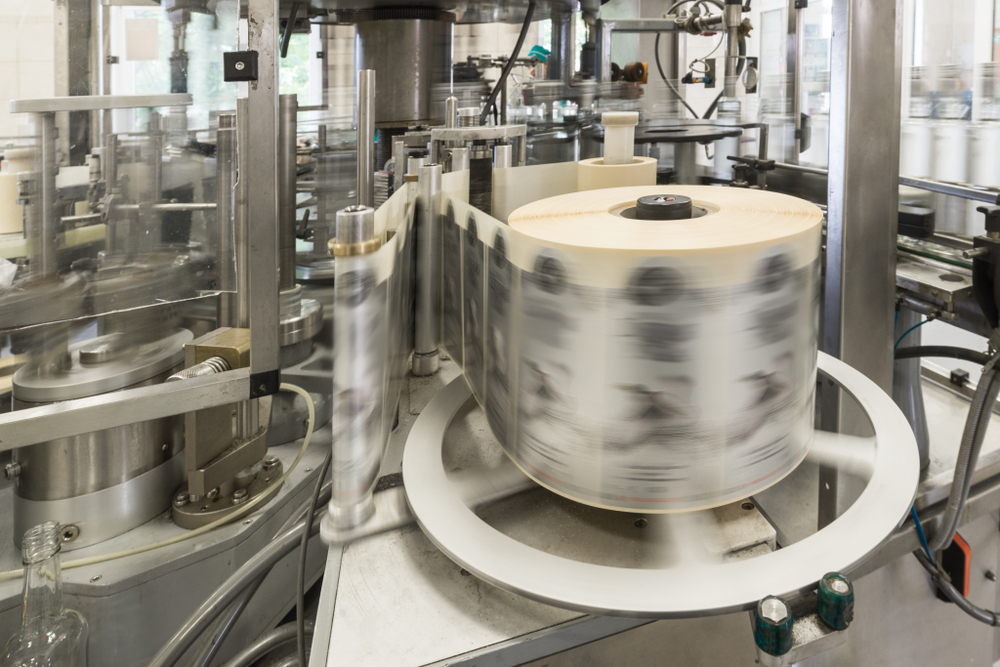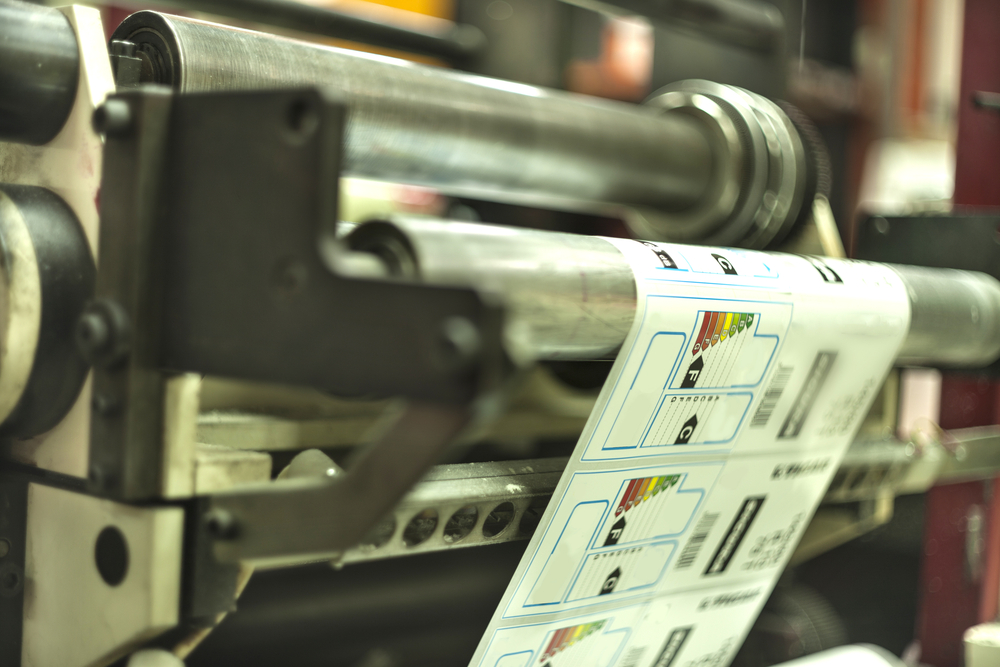In today’s competitive marketplace, labeling is influential in differentiating products and ensuring they meet specific industry requirements. From the food and beverage sector to the pharmaceutical and industrial markets, labels are about aesthetics, compliance, safety, and communication.
The Importance of Tailoring Labels for Different Industries
When it comes to labeling, one size does not fit all. Each industry has its own set of regulations, compliance requirements, and customer expectations. Tailoring labels for different industries is not just a marketing strategy; it’s a necessity. Tailored labeling helps companies position their products effectively within their target market. For instance, eco-friendly products feature labels highlighting sustainability through recycled materials and minimalist designs. On the other hand, luxury products may use high-end finishes, such as foil stamping or embossing, to convey quality and exclusivity. The ability to customize labels for different market segments ensures that the product resonates with its intended audience, ultimately driving sales and brand loyalty.
Key Points:
- Labels must be tailored to meet the specific needs of different industries.
- Compliance with industry regulations is critical.
- Adequate labeling can enhance brand recognition and consumer trust.
Understanding Industry-Specific Labeling Requirements

Different industries have distinct labeling requirements driven by regulatory bodies and market demands. In the food and beverage industry, labels must display nutritional facts, ingredients, and allergy warnings. For pharmaceuticals, labels must include precise dosing information, potential side effects, and storage conditions. Labels for the industrial market must withstand harsh environments and convey specific safety warnings for the product.
In addition to compliance, understanding industry-specific labeling requirements enables companies to avoid costly recalls and legal issues. A failure to include proper hazard symbols on industrial labels could lead to accidents in the workplace, resulting in liability claims. Similarly, inaccurate labeling in the pharmaceutical industry could lead to misuse of medication, posing severe health risks to patients. Companies must stay up-to-date with evolving regulations and ensure that their labels are compliant and adaptable to future changes in industry standards.
Key Points:
- Industry-specific regulations dictate the content and format of labels.
- Compliance with these regulations is essential to avoid legal penalties.
- Labels must be designed to communicate vital information effectively.
Label Design: Crafting Labels for the Food Industry
Label design in the food industry is more than just attracting consumers; it’s about conveying essential product information and meeting legal requirements. Food labels must be clear, informative, and compliant with the Food and Drug Administration (FDA) regulations. The design process must take into account the size of the label, the font used, and the placement of information such as nutritional facts and expiration dates.
A well-designed food label can also serve as a powerful marketing tool. By strategically using colors, typography, and imagery, companies can create labels that inform, evoke emotions, and tell a story about the brand. For instance, using vibrant colors and natural imagery can convey freshness and health, particularly appealing to consumers looking for organic or healthy food options.
Key Points:
- Food labels must include nutritional information, ingredients, and allergy warnings.
- The design must comply with FDA regulations.
- Effective food label design can influence consumer purchasing decisions.
Pharmaceutical Labeling: Ensuring Safety and Compliance
Pharmaceutical labeling is one of the most regulated areas, with strict guidelines set by agencies like the FDA. These labels must include precise information on dosage, administration, warnings, and contraindications. The design of pharmaceutical labels must prioritize clarity and readability to ensure patient safety. These labels often require the use of special materials that can withstand various environmental conditions, such as temperature fluctuations and exposure to chemicals.
Beyond regulatory compliance, pharmaceutical labels also need to foster trust between the patient and the healthcare provider. This trust is built through transparency and the availability of clear, accessible information. For example, using tactile elements like raised print can aid visually impaired patients in identifying medication. At the same time, tamper-evident seals on packaging can reassure consumers that the product is safe and uncompromised.
Key Points:
- Pharmaceutical labels must comply with stringent FDA regulations.
- Clarity and readability are paramount to ensure patient safety.
- Labels must be made from materials that can withstand specific environmental conditions.
Industrial Labels: Durability and Functionality
In the industrial sector, labels often need to endure harsh conditions, including exposure to chemicals, extreme temperatures, and heavy abrasion. Industrial labels must be durable and functional, providing apparent safety, handling, and compliance information. These labels are often used on machinery, tools, and hazardous materials, making it essential that they remain legible over time.
The functionality of industrial labels goes beyond their physical durability. These labels must also integrate seamlessly into the workflow of industrial settings. For example, labels on machinery must be positioned in a way that is easily visible to operators, ensuring that safety instructions are followed without hindrance. In addition, using barcodes and RFID tags on industrial labels can facilitate inventory management, allowing companies to track assets and monitor equipment maintenance schedules efficiently.
Key Points:
- Industrial labels must be durable and withstand harsh conditions.
- These labels provide critical information on safety and compliance.
- The design of industrial labels must prioritize legibility and longevity.
Designing Labels for Retail: Balancing Aesthetics and Functionality

In the retail industry, labels serve a dual purpose: they must be visually appealing to attract consumers and functional to provide essential product information. Retail labels often feature vibrant colors, eye-catching graphics, and engaging text to stand out on store shelves. However, they must also include critical information such as pricing, barcodes, and product descriptions. The challenge lies in balancing aesthetic appeal with the practical need for clear communication.
In the highly competitive retail space, labels are a direct line of communication between the brand and the consumer. They reflect the brand’s identity and values, which can influence consumer perceptions and purchasing decisions. A minimalist label design with clean lines and neutral colors might appeal to a premium or luxury market. In contrast, playful fonts and bright colors might be more suitable for products targeting children or young adults. Understanding the preferences and behaviors of the target audience is crucial in designing labels that resonate and convert interest into sales.
Key Points:
- Retail labels must be visually appealing to attract consumers.
- Labels must include essential information such as pricing and product descriptions.
- The design must balance aesthetics with functionality.
Meeting Compliance Regulations Across Different Markets
Each market has its labeling requirements that must be met to avoid legal repercussions. Labels in the European Union must comply with the General Product Safety Directive, while labels in the United States must adhere to FDA and Consumer Product Safety Commission (CPSC) standards. It is crucial for companies to stay informed about the regulations that apply to their specific markets and ensure that their labels are fully compliant.
Globalization has added another layer of complexity to labeling compliance. Companies that distribute products across multiple regions must navigate a web of regulations, each with its own set of requirements. This necessitates a flexible approach to label design, where labels can be easily adapted or modified to meet the specific regulations of different markets. Please do so to avoid costly delays, fines, or even the removal of products from the market. As such, companies are increasingly investing in compliance teams and advanced labeling software to manage these challenges efficiently.
Key Points:
- Compliance with labeling regulations is essential to avoid legal issues.
- Different markets have unique regulatory requirements.
- Staying informed about regulations is crucial for companies in all industries.
The Future of Label Design: Innovations and Trends
As technology advances, the future of label design is evolving rapidly. Innovations such as smart labels, which can provide real-time information via QR codes or NFC technology, are becoming increasingly popular. These labels can offer consumers instant access to product information, authenticity verification, and even promotional offers. Sustainable labeling practices are also gaining traction, with companies opting for eco-friendly materials and printing processes to reduce their environmental impact.
Moreover, integrating augmented reality (AR) into labeling is an exciting development. AR-enabled labels can provide an interactive experience for consumers, allowing them to see product demonstrations, access detailed information, or engage with brand content directly through their smartphones. This enhances the consumer experience and offers brands new avenues for storytelling and engagement. As these technologies become more accessible, the role of labels will expand beyond mere information carriers to dynamic tools for brand interaction and consumer education.
Key Points:
The future of label design will likely include more technology-driven innovations.
Smart labels are an emerging trend in label design.
Sustainable labeling practices are becoming more important.


